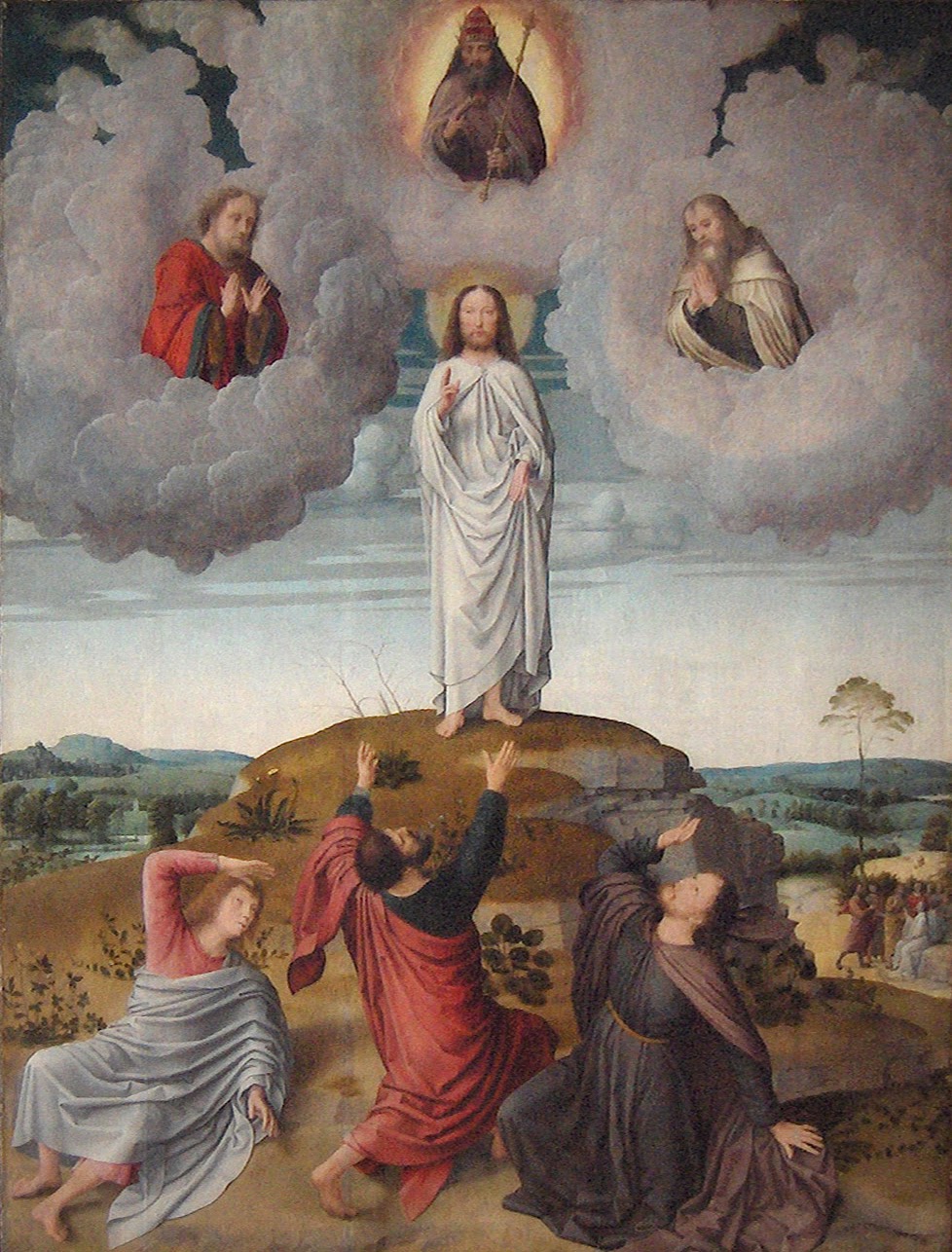We call this Sunday, which marks the beginning of Holy Week, both Palm Sunday and Passion Sunday. It is right and good that we call it both because it highlights the movement we enact in this liturgy- from revering Jesus, hailing Him with “Hosannas” while waving palm branches and acknowledging Him as Messiah, the heir of King David, if not quite yet as Lord, to reviling Him and calling for His crucifixion. This serves to highlight a reality described well by Aleksandr Solzhenitsyn: “the line dividing good and evil cuts through the heart of every human being.”
But it is only by His crucifixion and resurrection , through what we might call the inverse property of redemption, that the Jesus definitively demonstrated His Lordship, that is, His divinity.
It is important to point out that, in the Gospels, those who hail Jesus and those who revile Him and call for His death are not the same people. Pope Benedict, in Jesus of Nazareth: Holy Week: From the Entrance into Jerusalem to the Resurrection noted that all four Evangelists are clear that those clamoring for the Lord’s death are not “the Jewish people as such” (185). As the long, sad history of Christian anti-Semitism amply demonstrates, such an understanding is vitally important.
We know, not only from Scripture and Church teaching, or even from the glorious witness of the saints, but from our own experience that we bear our share of the responsibility for Jesus’ cruel and painful death. Hence, I try to be ever mindful that when Jesus forgave those nailing Him to the Cross, He forgave me. When considering this convicting reality, it is important never to lose sight of the inverse property of redemption, which teaches us that love is stronger than death.
Just what is the inverse property of redemption? It is nothing other than this: without His resurrection, Jesus’ crucifixion is just another appalling instance of man’s inhumanity to man, which can only be lamented and mourned - AND - in order to be resurrected, Jesus had to die.
Yesterday was the 500th anniversary of the birth of that great Doctor of the Church, the Carmelite mystic, St Teresa of Ávila. In contemplating her life and witness we are faced with the fact that she suffered much, even after her profound encounter with the risen Lord. Once St Teresa complained to the Lord in prayer about the hostility she faced. When Jesus told her, “Teresa, that's how I treat my friends,” she replied, “No wonder you have so few.” This reality is something most of us, including myself, find disconcerting, despite the fact the Lord tells us that to follow Him is to be led to the Cross.
Let’s not forget the words of Jesus from last Sunday’s Gospel:
Amen, amen, I say to you, unless a grain of wheat falls to the ground and dies, it remains just a grain of wheat; but if it dies, it produces much fruit. Whoever loves his life loses it, and whoever hates his life in this world will preserve it for eternal life. Whoever serves me must follow me (John 12:24-26a)
Crucifixion, by Graham Sutherland, 1946
In the midst of your own pain and suffering, how often have you cried out, like Jesus on Cross, using the words like those found at the beginning of the twenty-second Psalm - “My God, my God, why have you abandoned me?” Like our Lord on the Cross, do not forget that this Psalm, as well as your own suffering, at least when you unite it to Christ's, are occasions of hope, not despair, as counter-intuitive as that may seem. We read further on in Psalm 22: God “has not spurned or disdained the misery of this poor wretch, [He] did not turn away from me, but heard me when I cried out” (25). The proof that God hears the cries of Eve's “poor, banished children" is His Son’s resurrection from the dead.
My brothers and sisters, our take-away today is simple: if we would rise with Christ, we must die with Him. This is nothing other than to understand and live, or, in the case of our Elect, to prepare for, our Baptism into the Lord’s death and resurrection.





















